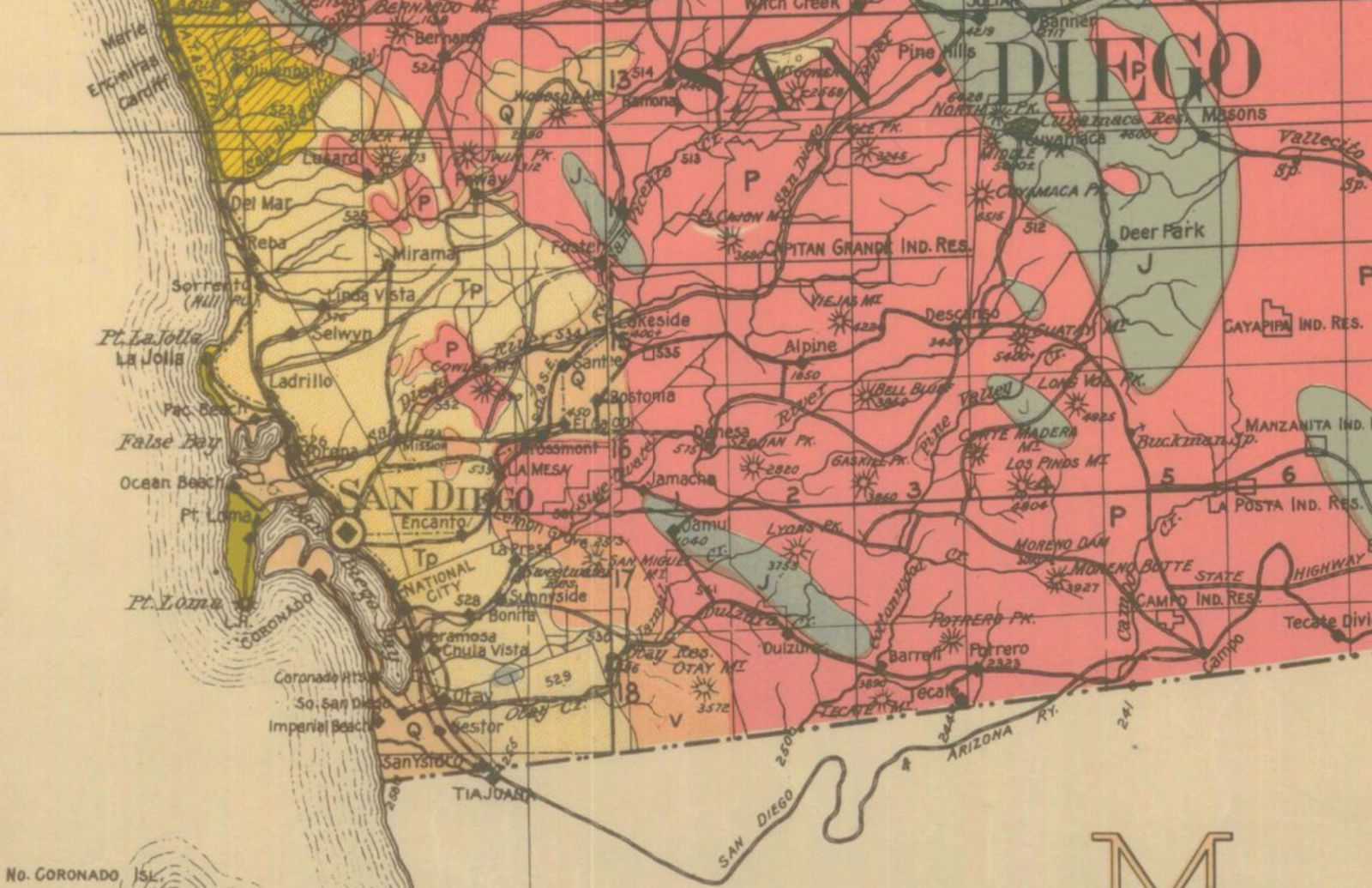Fold Map

California, San Diego County
Walking Maps and Discovery

Recent Hikes
Peñasquitos Creek West (less than 2MB)This western entrance to Peñasquitos is twenty minutes north of the city center, it is a protected natural space for six miles east along the creek valley.
Ballena (less than 10MB)
A creek north of the San Diego River,
Kitchen Creek Road (15MB)
This old road closed to cars climbs high into the Laguana Mountains.
Sutherland (5.4MB)
A creek path down the this dam ten miles northeast of Ramona.
From my joy for exploration of land through walking I've created these tour outlines.
Let's strive for a more layered understanding our region.
Jeremy, San Diego
Recent Thoughts
Peñasquitos Creek
July 16, 2021The western portion of the Penasquitos Canyon Preserve has less tree cover that the trail just north of Mira Mesa, but the in the early evening the cooling day and colors of the falling sun make favorable conditions for a hike.
Rights of Way
November 8, 2020In San Diego County, the Coast to Crest Trail builds a nearly-contiguous natural walking path from the beach to the summit of Vulcan Mountain just northeast of Julian. This was made possible though a series of public land purchases and negociated easements cobbled together by local goverment. This is a wonderful opportunity for local hikers to reach the Pacific Crest Trail starting from the Pacific Shore.
The pathway traces watersheds which have been used as passageways for mellenia, right of ways preserved even in the Spanish Rancho system. In the case of the Coast to Crest Trail such maneuvering by public funds were required to alleviate what should have well been a guarantee of a positive right of people to pass in nature along ancient routes even those in private hands. The privatization of former passages is an error in itself seeking remedy.
Southern California from
Pío Pico to Hoover Dam
Oct 16, 2020
In 1845 it was clear to the governor of Alta California, Pío Pico, that the American Armies would soon take the northern lands of Mexico. So he quickly granted the prime California pasture lands in vast swaths of public land to petitioners, well represented by friends, family members, allies, and himself.
The boundaries of these division of land was often loosely defined by mountains and creeks. The northern reaches of the Mexican State, then named Alta California, was sparcely populated in 1845 compared to any time before the Spanish conquest or after American colonization, which opened like a flood in 1849.
Mexican Land Grants, recognized by the Treaty of Guadalupe Hidalgo, within twenty years of annexation would be mostly be bought by speculators from Europe and Connecticut, and the many arms of the Atchison, Topeka, and Santa Fe Railroad Company.
Just as the earlier Mission system of Spain pushed indigenous people to the rocky boundaries of the Southern California landscape, the American colonization would by 1870 create defacto domination across previously sparely-populated land. By the year 1900 dammed rivers and citrus grove subdivisions would trace the grid of a Southern California that a comtemporary reader would faintly recognize. After the dam building binge of the 1930s the natural spaces dried up and so did most life making a living on the outskirts of the water department.
As I have, you will find these names are still inscribed in many small places on roads broken and unbroken that connect modern tracted-Southern California. And as we trace roads and creeks we will start to discover the layered landscape that has always been right here under our feet.
Jeremy